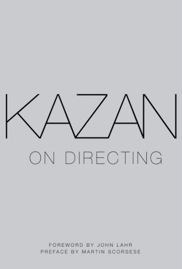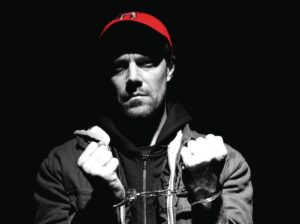Eric Lax on Elia Kazan
Whatever one thinks of his politics, Elia Kazan was inarguably one of the 20th century's greatest Broadway and Hollywood directors. A new book reveals the master at work.Whatever one thinks of his politics, Kazan was inarguably one of the 20th century's greatest directors.
Original intent is a murky sea indeed if one wants to consider the U.S. Constitution, but for the work of Elia Kazan it now is an azure pool of clarity. In “Kazan on Directing,” Robert Cornfield has edited the notebooks and other writings of the man who was at the center of American theater and film in the mid-20th century to give us a portrait of the artist in his own words as he planned (and plotted, too, in what we see was his conspiratorial style) how best to bring a play or film to life.
It is impossible to overstate Kazan’s contribution to the world of American drama. He was a principal of the Group Theater and then the Actors Studio, which adapted Konstantin Stanislavsky’s “Method” notion that an actor will most naturally portray a character if he first has a psychological identification with the role. The list of actors trained in this discipline would fill a block of marquees. Among them: Marlon Brando, James Dean, Lee J. Cobb, Robert De Niro, Jo Van Fleet, Julie Harris, Karl Malden, Paul Newman, Geraldine Page and Eva Marie Saint. (“You have to start from the actor, and you have to find out where the part is alive for him. Somewhere within them the part must exist,” Kazan wrote.)
Kazan directed, among other Broadway debuts, Arthur Miller’s “All My Sons” (1947), “Death of a Salesman” (1949) and “After the Fall” (1964); Tennessee Williams’ “A Streetcar Named Desire” (1947), “Cat on a Hot Tin Roof” (1955) and “Sweet Bird of Youth” (1955), along with major plays by William Inge, S.N. Behrman, Thornton Wilder and Archibald MacLeish. He received seven Tony nominations for his direction and won three times.
The films he directed include “A Tree Grows in Brooklyn” (1945), “Gentleman’s Agreement” (1947), “A Streetcar Named Desire” (1951), “On the Waterfront” (1954), “East of Eden” (1955), “Baby Doll” (1956), “A Face in the Crowd” (1957), “Wild River” (1960), “Splendor in the Grass” (1961) and the autobiographical “America America” (1963). He received five Oscar nominations for his directing, won twice (“On the Waterfront” and “Gentleman’s Agreement”) and received an honorary award in 1999 for his “long, distinguished and unparalleled career during which he has influenced the very nature of filmmaking through his creation of cinematic masterpieces.” (There was considerable protest from a segment of Academy members because Kazan had testified as a friendly witness before the House Committee on Un-American Activities 47 years earlier.)
|
To see long excerpts from “Kazan on Directing,” click here. |
Kazan was fearless, fearsome, ferocious, pugnacious, instinctive, ambitious, compulsive, defiant, brutally honest, totally charming and, above all, insightful. He was a chronic and unrepentant womanizer. And he was a genius at, as he put it, turning “the inner events of the psyche into a choreography of external life.” (“A thought — directing … consists of turning Psychology into Behavior,” he wrote in 1947.) He looked ruthlessly into his own character and experience to find the heart and soul of a production.
Born in 1909 in Constantinople, he emigrated from Turkey to New York at age 4 with his Anatolian Greek parents, George and Athena Kazanjioglou. His mother doted on him and made him her confidant. His carpet salesman father responded with vengeance. “Don’t you look in the mirror?” George demanded when Elia declared his desire to be an actor. In truth, with what Cornfield describes as his “gnarly mug, with its large, jagged nose,” Kazan was not handsome, but that became the source of his strength. He parlayed his humiliation from his sense, even as a student at Williams College, that he was “an outsider. An Anatolian, not an American,” into an outcast’s desire for control and revenge. It worked. If he could not make himself into a successful actor, he would make successful actors, and productions that everyone talked about. Their triumphs put him “where I wanted to be, the source of everything.”
Including the transcription of his thoughts. It is instructive and pleasurable to read what Kazan had to say without benefit of a filter, and there is the bonus of seeing how his ideas change over time, and how he argues with the playwrights whose work he’s directing. With Tennessee Williams, for instance, there is a fascinating back-and-forth about the character of Brick in “Cat on a Hot Tin Roof.”
“Here’s the conclusion I’ve come to,” Williams wrote to Kazan. “Brick did love Skipper. … He identified Skipper with sports, the romantic world of adolescence which he couldn’t go past. Further: To reverse my original (and somewhat tentative) premise, I now believe that, in the deeper sense, not the literal sense, Brick is a homosexual with a heterosexual adjustment: a thing I’ve suspected of many others, such as Brando, for instance. (He hasn’t cracked up but I think he bears watching, he strikes me as being a compulsive eccentric.)”
Kazan had his own thoughts on Williams. Regarding “Sweet Bird of Youth,” “I think this is the most truly autobiographic play Williams ever wrote,” Kazan wrote to a friend. “Not in the way “[The Glass] Menagerie” was autobiographical—not a memory, softened and romanticized by time, of his youth, but Tennessee trying to describe his state of soul and state of being today and now. It is the frankest play he has written, dealing as it does with his own corruption and his wish to return to the purity he once had. … I don’t think Tennessee could live if he were unable to function as a writer. His art is necessary for him.” Kazan worked out what the core motive—he called it the “spine”—of a play or film was by first discovering what it meant for himself. Once he had personalized it, he then could work out its design and figure out the characters’ lives before the drama at hand. Here he is, peeling away at the essence of “A Streetcar Named Desire,” and the character of Blanche DuBois (played by Jessica Tandy):
Theme: This is the message from the dark interior. The little twisted, pathetic, confused bit of light and culture puts out a cry. It is snuffed out by the crude forces of violence, insensibility, and vulgarity that exist in our South—and this is the cry of the play.
Style: One reason a “style,” a stylized production, is necessary is that Blanche’s memories, inner life, emotions are a tangible, actual factor. We cannot understand her behavior unless we see the effect of her past on her present behavior.
The play is a poetic tragedy. We are shown the final dissolution of a person of worth, who once had great potential, and who, even as she is defeated, as she is destroyed, has a worth exceeding that of the “healthy,” course-grained figures who kill her.
Blanche and Don Quixote are both emblems of the death of an old culture. This is a poetic tragedy, not a realistic, naturalistic one. The acting must be styled, not in the obvious sense. (Say nothing about this to the producer and actors.)
Of Stanley Kowalski (and himself) Kazan muses:
He means no harm. … Only he doesn’t want to be taken advantage of. … Why does he want to bring Blanche, as he brought Stella [Kim Hunter], down to his level? It’s as if he said: “I know I haven’t got much, but no one has more and no one’s going to have more.” He’s the hoodlum aristocrat, and he’s deeply dissatisfied, deeply hopeless, deeply cynical. … Are we going into the era of Stanley? He may be practical and right, but where the hell does that leave us? Make this a personal objective characterization for Marlon Brando. Choose Marlon’s objects. The things he loves and prizes, all sensuous and sensual: the shirt, the cigar, the beer (how it’s poured and nursed).
Stanley is exactly like you in some ways. He’s supremely indifferent to everything else except his own pleasure and comfort.
One of the many fascinations of “Kazan on Directing” is watching Kazan probe and circle and analyze every aspect of the stories, characters and actors to discern his “spine.” Directors can be divided into two very basic groups: those who are directing someone else’s work, and those who are directing their own. For Kazan and any other director of another person’s writing, the script is a puzzle to solve, “a construction,” as he put it. “We learn to feel for the skeleton under the skin of the words,” and the intellectual and psychological sweat Kazan expressed rivals that shed by a mathematician trying to solve Fermat’s Last Theorem. As a personal aside, over the last nearly 40 years, I’ve been in regular conversation with Woody Allen about his work and watched him go about it on about half of his films. He describes none of the agony and exhilaration of discovery Kazan does because all those questions were answered for him in the writing. Thus whereas a director of someone else’s work will often make a storyboard with the shooting of every scene detailed—something that has taken days and days to visualize—Allen arrives on the set and looks around the room with his cinematographer and they quickly decide on the shot because he has already seen the film in his head as he wrote it.
It is hard to imagine how a director could be more involved with his actors than was Kazan. Certainly no one was before him. Kazan’s practical and intellectual experience with training actors carried over into his work with them, and he treated each one differently, establishing a conspiratorial bond. Arthur Miller wrote that “[h]e would send one actor to listen to a particular piece of jazz, another to read a certain novel, another to see a psychiatrist, and another he would simply kiss. … Instinctively, when he had something important to tell an actor, he would huddle with him privately rather than instruct before the others, sensing that anything that penetrates is always to some degree an embarrassment. … He let the actors talk themselves into a performance.” And when he saw a natural tension that he liked, he exploited it, as he did in the film “East of Eden.” The venerable Raymond Massey was dismissive of the sullen James Dean, and Kazan captured their antagonism in the father-son relationship on the screen.
“This was an antagonism I didn’t try to heal; I aggravated it,” Kazan later wrote, pleased with the result. “The screen was alive with precisely what I wanted: they detested each other.”
Kazan’s supportive, even parental style with actors was not shared by many of his peers. John Ford, whose films Kazan admired, hated talking with actors, and William Wyler felt it was not his job to help an actor into a role. When a cast member once asked Wyler for insight into his character, Wyler is reported roughly to have said (and said roughly as well): “Fuck you. Get in there and act. I’m a movie director, not an acting coach.”
“Kazan on Directing” was decades in the making. Kazan, a fastidious note taker on his life and thoughts, long wanted to write a book on directing: not a how-to, but something that conveyed in an easy-going style the joy his work brought him. He began work on it when he was 78 (he died in 2003, age 94), writing bits on the physical and psychological preparations for production, pieced together with narrative. He never finished. In 1995 he gave the work-in-progress to the estimable Katherine Hourigan, now the managing editor at Alfred A. Knopf, who had worked with him on his 1988 autobiography, “Elia Kazan: A Life.” In addition to the material at Knopf, box upon box upon box of his writings, notes and diaries are collected at Wesleyan University. Robert Cornfield, a knowledgeable student of the theater who saw many of Kazan’s original productions, read the thousands of pages, edited them into this remarkable book and provided an illuminating commentary. The last chapter of Kazan’s thoughts in this book, “The Pleasures of Directing,” comprises the highlights of Kazan’s notes and his start on the book on that subject he hoped to write. Through Cornfield’s skillful editing and guidance, “Kazan on Directing” is much more than just a seminal director’s paean to his craft: It is a marvelous dissection and explanation of how Kazan brought to life some of America’s greatest pieces of drama, and at what personal price.
|
Eric Lax is the author or co-author of several biographies, including works on Paul Newman, Humphrey Bogart and Woody Allen. |
Independent journalism is under threat and overshadowed by heavily funded mainstream media.
You can help level the playing field. Become a member.
Your tax-deductible contribution keeps us digging beneath the headlines to give you thought-provoking, investigative reporting and analysis that unearths what's really happening- without compromise.
Give today to support our courageous, independent journalists.





You need to be a supporter to comment.
There are currently no responses to this article.
Be the first to respond.